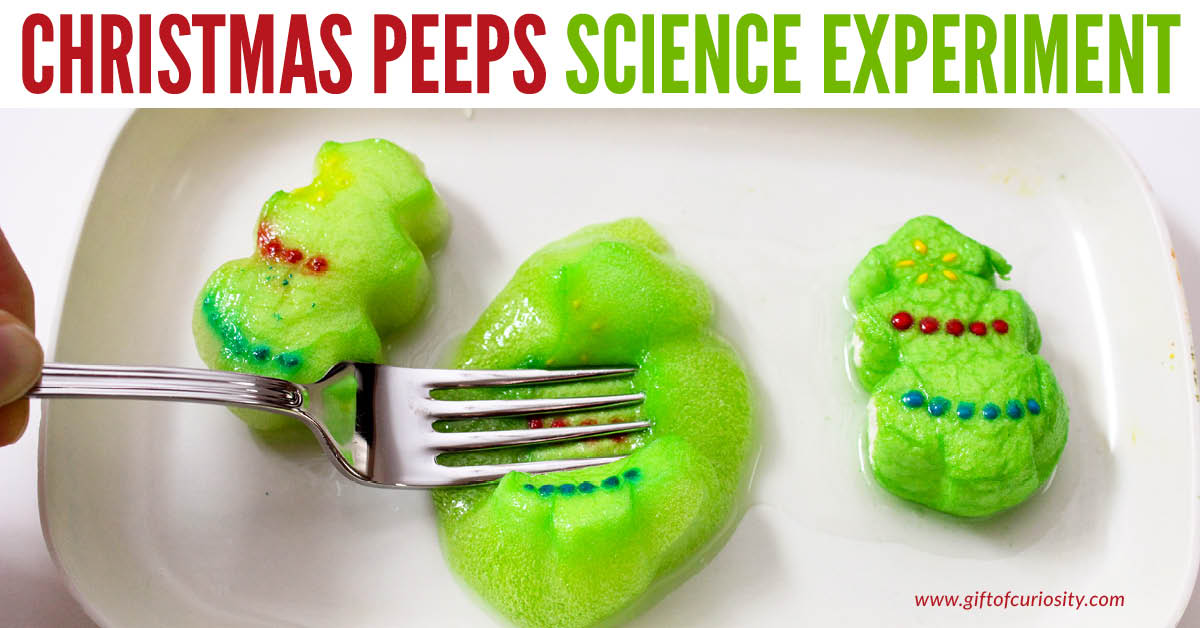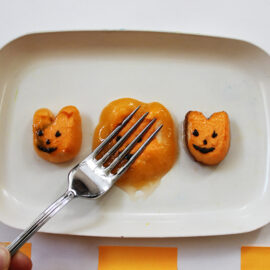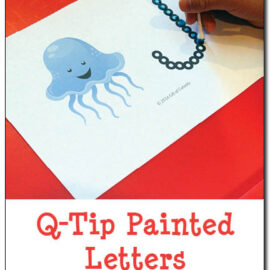This post may contain affiliate ads at no cost to you. See my disclosures for more information.
Peeps are a classic holiday candy. Although I believe the first peeps were created for Easter, now there are Peeps available for virtually all the major holidays, including Christmas.
While peeps are full of sugar and gelatin – and they are terrible for your health! – they are also great for doing science experiments.
If you would like to find something to do with your Christmas peeps that doesn’t involve eating them, try using them for a Christmas science experiment that will be both fun and educational for the kids. I love
Kids can learn about dissolving science using Christmas peeps and a few different liquids. I love how this STEAM (science, technology, engineering, art, and math) activity integrates learning with the holidays.
Note: For more Christmas STEAM activities your kids will love, see my Christmas Activities for Kids page.
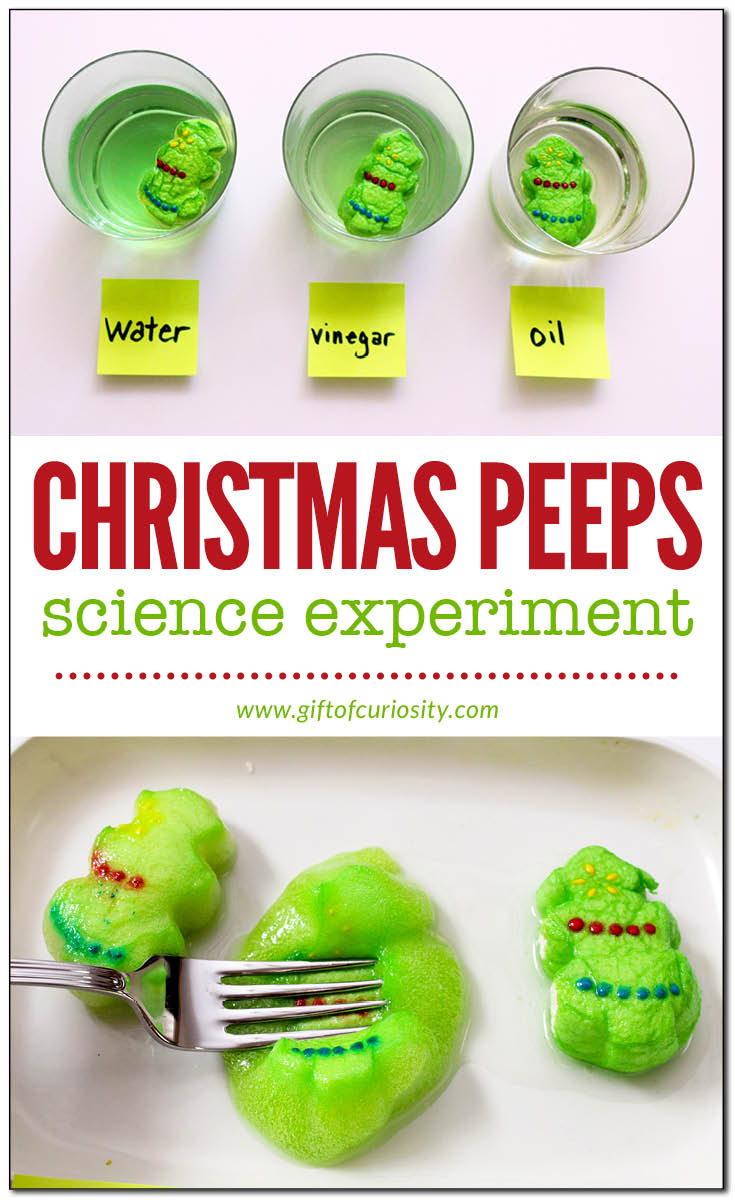
There are several different varieties of Christmas peeps you can choose from, including reindeer, gingerbread men, and candy canes. We used Christmas trees for our experiment, but any of the other Christmas peeps should work just as well.
We placed one peep each into the bottom of three glasses.
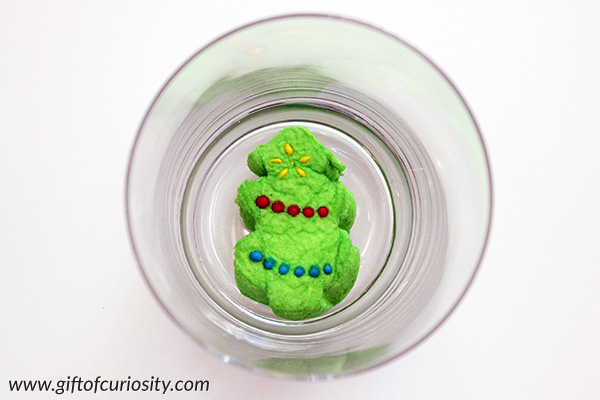
We then filled each glass with a different liquid.
We chose to use water, vinegar, and oil as our three liquids.
This is a good time to have your kids make a prediction about what will happen to each of the peeps as they sit in the liquid. Write down their predictions so you can re-visit them once the experiment has concluded.
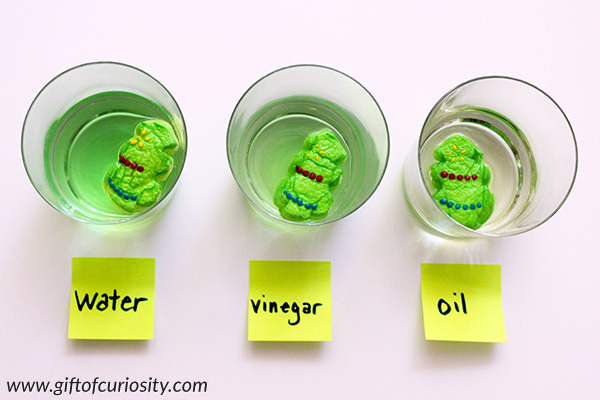
Two days later, we checked on our peeps again.
The liquid in the water glass had turned quite green, much more so than the liquid in the vinegar and oil glasses.
As for the peeps themselves, the one in the vinegar had started to noticeably disintegrate. Its outside edges were white and frothy looking.
The peep in water was looking slightly puffy. But the peep in the oil didn’t seem to have changed much at all.
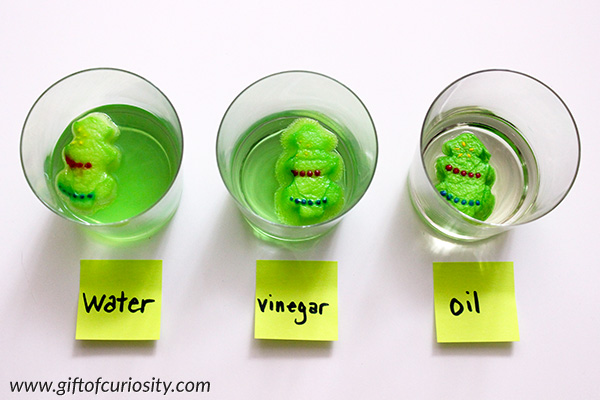
However, we removed the peeps from the liquid and placed them onto a tray to examine them more closely.
In removing them from the glasses, the differences became more apparent. The peep in oil definitely had held its shape better than the other two.
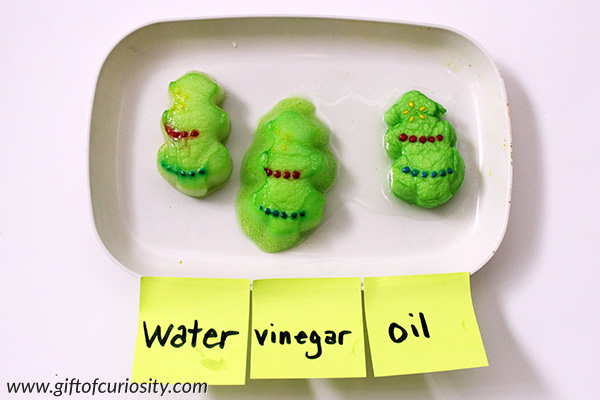
We took a fork and gently pushed down on each of the peeps to see what would happen.
Nothing too interesting happened when we pushed down on the peep that had been in water. It still had a pretty substantial feel to it and only squished a little.
The peep that had been in vinegar continued to break down and disintegrate, as it had become very squishy and not firm at all. Green bubbles spread out all around the peep when pressure was applied.
The peep that had been in oil was still pretty solid, indicating that little had changed.
If your children wrote down their predictions at the start of the experiment, be sure to revisit their predictions and see how accurate their predictions were. If their predictions completely missed the mark, discuss why the results you got were so different from their predictions.
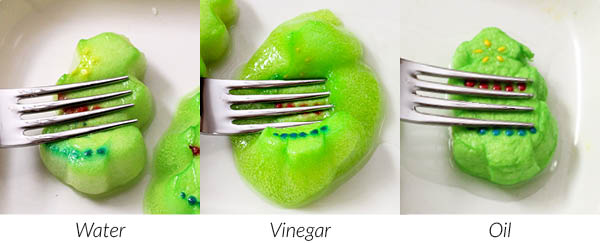
All in all, this was a fun experiment and we learned a bit about how well different liquids will dissolve sugar and gelatin.
One way you could change up this experiment is to use different liquids. Another option would be to compare outcomes after different soaking times (e.g., 24 hours vs. 72 hours). Older kids can also do some research on the solubility of the different liquids.
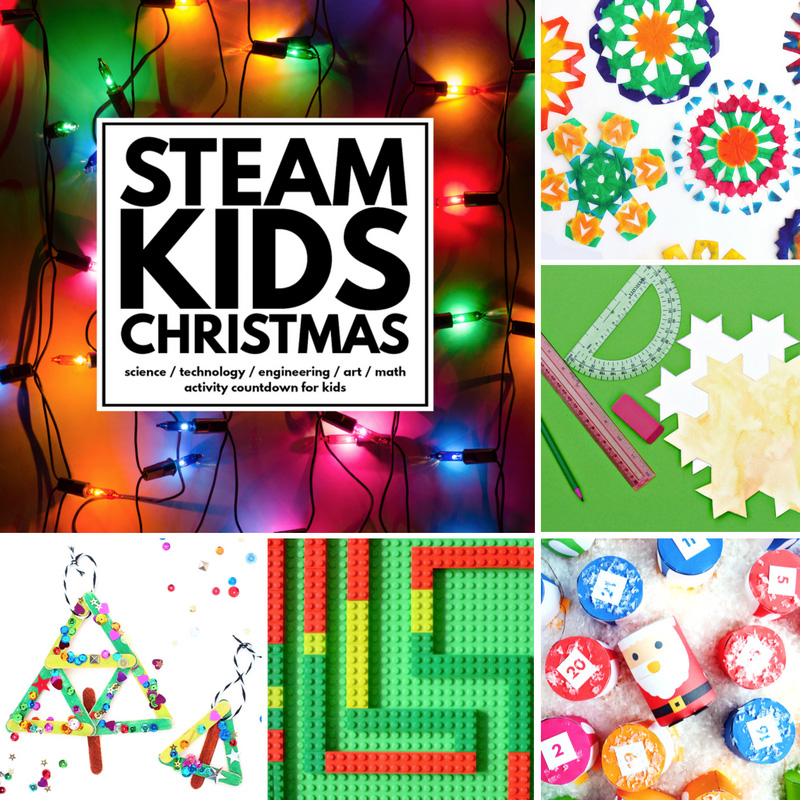
Looking for more Christmas ideas that incorporate Science, Technology, Engineering, Art, and Math (STEAM)?
Then you’ll love STEAM Kids Christmas.
This e-book includes 25 days of holiday projects that will wow the boredom right out of kids!
More Christmas resources
More Christmas STEAM activities from Gift of Curiosity:
- Candy cane experiment
- Christmas tree on a sponge
- Christmas fizzy painting
- Painting with candy canes
- Christmas tree ribbon math craft
- Cinnamon Christmas tree ornaments
For more Christmas activities your kids will love, see my Christmas Activities for Kids page and my Christmas Activities for Kids Pinterest board.
